Hungarian-born American architect and designer Marcel Breuer was one of the most influential Modern Design figures. As a Great innovator, he eagerly tested new advances in technology and broke away from conventional forms.
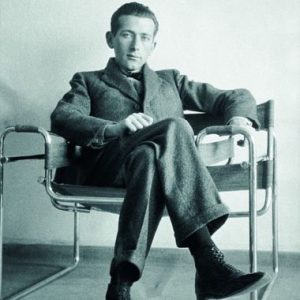
Image source: https://search.creativecommons.org/photos/841a4f3e-f7fb-443e-a187-922a4258d0a5 by moonoa
About His Life
Marcel Breuer was born on May 21, 1902, in Pecs, Hungary. He moved to Vienna with his family at the age of 18, where he attended the Art Academy to pursue his studies as a painter. Then, he enrolled in Bauhaus, Weimar, which was then a part of Germany. During the next four years at Bauhaus, Breuer devoted himself to the study of architecture. Walter Gropius was a primary influence and model for his project. In 1925, he moved to Dessau, where he designed the entire furniture line for Gropius buildings. In 1928, Breuer established his practice as an architect. Then, in 1933, Breuer was forced to leave Germany and moved to London. Four years later, Breuer accepted Gropius’ invitation to the United States. In 1976, Breuer decided to retire from active practice, passing away five years later, in 1981.

Image source: https://en.wikipedia.org/wiki/Marcel_Breuer#/media/File:Breuer-Main_entry_image.png
His Major Works
Breuer authored several high-profile architectural projects, such as the Ameritrust Tower (1968-1971, Ohio, USA), the Cleveland Museum of Art (Ohio, USA), the Flaine Resort (1969, Flaine, France), Josephine M. Hagerty House (1938, Massachusetts, USA), Murray D. Lincoln Campus Center (Massachusetts, USA), and the Saint John’s Abbey (1961, Collegeville, Minnesota, USA).
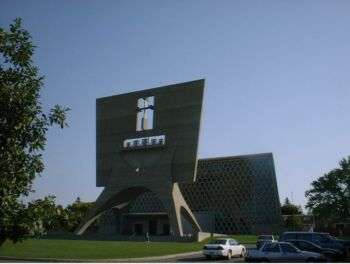
Image source: https://en.wikipedia.org/wiki/Marcel_Breuer#/media/File:Saint_John’s_Abbey.jpg
Breuer’s body of work includes numerous houses as well. Notably, the Breuer House (1948, New Canaan, Connecticut, USA), the first of his New Canaan’s homes; the Seymour Krieger House (1958, Bethesda, Maryland, USA), one-story, a steel-framed building made out of an all-stretcher coursed brick; the Robert C. Weaver Federal Building (Washington, D.C., USA), a 10-story office building owned by the federal government; the World Heritage Centre (1951, Paris, France), an active UNESCO Headquarters; Waldenmark, also known as the Edward Fischer House (New York, USA), a historical house, studio, garage, and guesthouse; the Whitney Museum of American Art, known as The Whitney (1964-1966, New York, USA) and the Atlanta Public Library (1980, Atlanta, USA).

Image source: https://search.creativecommons.org/photos/f2c107f0-c5f5-4128-959e-fda8c813e6f0 by gnrklk

Image source: https://search.creativecommons.org/photos/93539862-0e92-465e-87e9-85d2773605c9 by Sergio Calleja (Life is a trip) from Barcelona, Spain
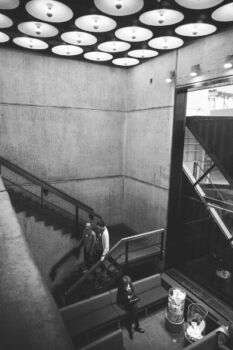
Image source: https://search.creativecommons.org/photos/c34320dc-8045-424e-85ff-79f3320f4b62 by jonolist
Outside his architectural legacy, Breuer is famous for his outstanding furniture design. Further, he designed the legendary B3 Wassily club chair, the first tubular metal chair in 1925. Another iconic product were the B9 and B3 tables (1925-1926). Moreover, these two were Breuer’s first commissions for Bauhaus. Then, in 1928, he designed and built the Cesca Chair, working with the steel tubes typical of Modernist design. He intended to combine modern, rigorous design guidelines with a comfort-based approach to ensure both rest and elegance.
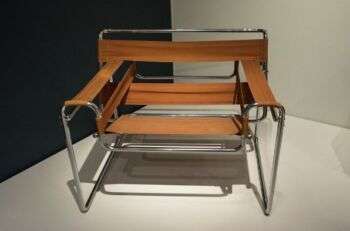
Image source: https://search.creativecommons.org/photos/2c69215f-e6ac-41ea-aea2-d6b272f31b67 by Tim Evanson

Image source: https://search.creativecommons.org/photos/affb4f80-b765-465b-8845-106aa92b8471 by oswaId
The Breuer Style
Breuer’s architectural style went through great evolution, with at least four recognizable phases.
- The white box and glass structures of the International style, which he adopted for his early houses in Europe and the USA.
- The punctured wooden walls, which characterized his famous house in New Canaan, with its balcony hung off a cantilever.
- The modular prefabricated concrete panel facades, which he used in many of his institutional buildings plus the whole town of Flaine.
- The stone and shaped concrete, which he used for the Whitney Museum of American Art, the St John’s Abbey, or the Atlanta Public Library.

Image source: https://search.creativecommons.org/photos/46c0534b-561c-4d5d-a36a-fb9be31897e6 by Spudgun67
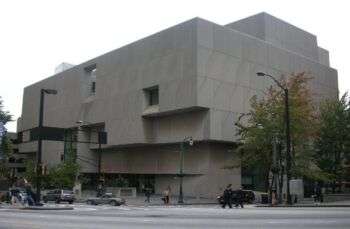
Image source: https://en.wikipedia.org/wiki/Atlanta_Central_Library
During his processes, he ensured the new industrial innovations in bending tubular steel were adopted. Additionally, such care as his typically used metal structural frames, thereby demonstrating the possibilities of modern industry applied to everyday objects.
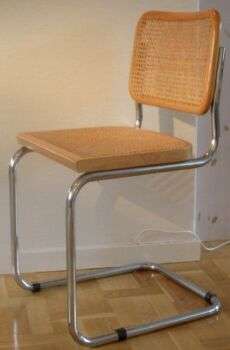
Image source: https://en.wikipedia.org/wiki/Marcel_Breuer#/media/File:Breuer_chair_2008.jpg
Info sources:
http://www.ranker.com/list/marcel-breuer-buildings-and-structures/reference
http://www.archilovers.com/stories/2263/marcel-breuer-1902-1981.html
http://www.bauhausitaly.com/bauhaus-furniture/marcel-breuer/cesca-breuer-bauhaus-chair+i67.html
